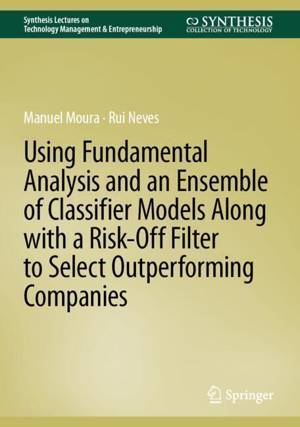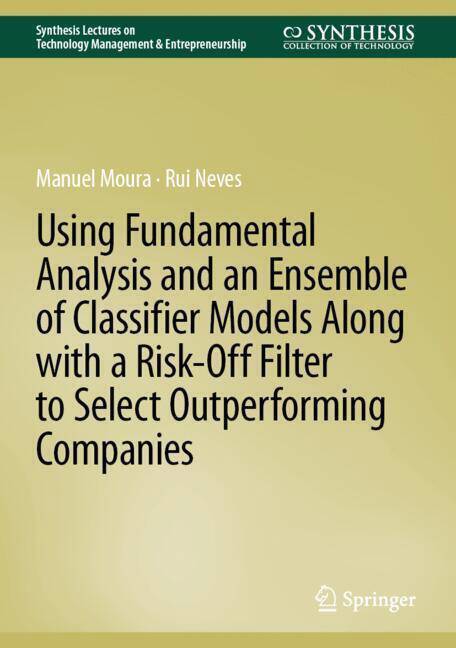
- Retrait gratuit dans votre magasin Club
- 7.000.000 titres dans notre catalogue
- Payer en toute sécurité
- Toujours un magasin près de chez vous
- Retrait gratuit dans votre magasin Club
- 7.000.0000 titres dans notre catalogue
- Payer en toute sécurité
- Toujours un magasin près de chez vous
Using Fundamental Analysis and an Ensemble of Classifier Models Along with a Risk-Off Filter to Select Outperforming Companies
Manuel Moura, Rui NevesDescription
This book develops a quantitative stock market investment methodology using financial indicators that beats the benchmark of S&P500 index. To achieve this goal, an ensemble of machine learning models is meticulously constructed, incorporating four distinct algorithms: support vector machine, k-nearest neighbors, random forest, and logistic regression. These models all make use of financial ratios extracted from company financial statements for the purposes of predictive forecasting. The ensemble classifier is subject to a strict testing of precision which compares it to the performance of its constituent models separately. Rolling window and cross-validation tests are used in this evaluation in order to provide a comprehensive assessment framework. A risk-off filter is developed to limit risk during uncertain market periods, and consequently to improve the Sharpe ratio of the model. The risk adjusted performance of the final model, supported by the risk-off filter, achieves a Sharpe ratio of 1.63 which surpasses both the model's performance without the filter that delivers Sharpe ratio of 1.41 and the one from the S&P500 index of 0.80. The substantial increase in risk-adjusted returns is accomplished by reducing the model's volatility from an annual standard of deviation of 15.75% to 11.22%, which represents an almost 30% decrease in volatility.
Spécifications
Parties prenantes
- Auteur(s) :
- Editeur:
Contenu
- Nombre de pages :
- 71
- Langue:
- Anglais
- Collection :
Caractéristiques
- EAN:
- 9783031620607
- Date de parution :
- 19-06-24
- Format:
- Livre relié
- Format numérique:
- Genaaid
- Dimensions :
- 175 mm x 254 mm
- Poids :
- 476 g

Les avis
Nous publions uniquement les avis qui respectent les conditions requises. Consultez nos conditions pour les avis.






